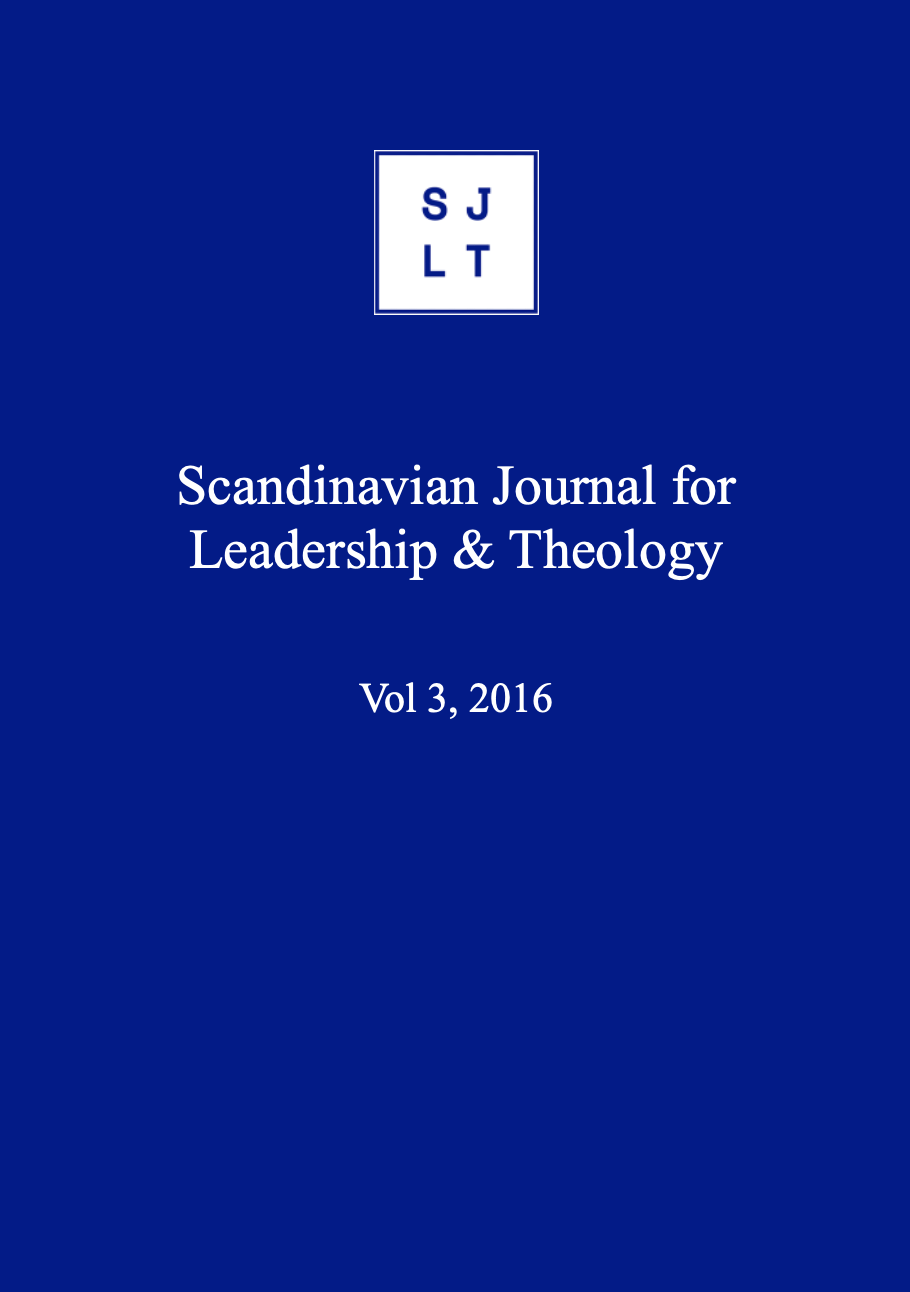Abstract
In this article I discuss homosexuality and Christian faith as a ”rhetorical crisis” in some Swedish churches. I refer mainly to articles from the Christian newspaper Dagen from 2000-2015, with a special focus on an intense debate in the spring of 2015. The study shows that the discussion changes over time, that it moves between different media and that new actors with their agendas affect what could be described as an ongoing struggle for discursive power. Yet there is also a meta-level in the discussion which relates to the theme of “rhetorical crisis” since it concerns communicative issues like how and where one should talk about the subject. The study also shows that the leadership of the Pentecostal movement time and again are challenged to take a stance but that they are reluctant to do so and instead attempt to mold the discussion and position it in the local churches.
References
Archer, K.J. (2004). A Pentecostal hermeneutic for the twenty-first century: spirit, scripture and community. London: T & T Clark.
Hansson-Nylund, Helena (2016). Hållbar dialog? Retorik i möten om svensk kärnavfallshantering. Örebro Universitet.
Edsinger, O. (2015). När minoriteten tar majoriteten som gisslan: om identitet och sexualitet i queerteoriernas tidevarv. Stockholm: Svenska evangeliska alliansen.
Greimas, A.J. (1984). Structural semantics: an attempt at a method. Lincoln: University of Nebraska Press.
Hauerwas, S. & Jones, L.G. (red.) (1997). Why narrative?: readings in narrative theology. Eugene, Or.: Wipf and Stock.
Lakoff, G. & Johnson, M. (1980). Metaphors we live by. Chicago: Univ. of Chicago Press.
Meretoja, Hanna (2013). Philosophical underpinnings of the narrative turn in theory and fiction. I Matti Hyvärinen, Maria Hatavara & Lars-Christer Hydén (red.), The Travelling Concepts of Narrative, (93-121). DOI: https://doi.org/10.1075/sin.18.07mer
Mral, B., Gelang, M. & Bröms, E. (2016). Kritisk retorikanalys: text, bild, actio. Ödåkra, Sverige: Retorikförlaget.
Railsback, Celeste Condit (1984). The Contemporary American Abortion Controversy: Stages in the Argument. Quarterly Journal of Speech 70, (410-424). DOI: https://doi.org/10.1080/00335638409383707
Ruzza, Carlo (2009). Populism and euroscepticism: Towards uncivil society? Policy and Society 28, (87–98), DOI: https://doi.org/10.1016/j.polsoc.2009.02.007
Teologiska nätverket i Pingst. (2005). Homosexualitet och kristen tro. Örebro: Libris. Teologiska nätverket i Pingst (2014). Trons hemlighet: vägledning i de kristna grunderna. Bromma: Nätverket
Vatz, Richard E. (1999). The Myth of the Rhetorical Situation. I John Lous Lucaites, Celeste Michelle Condit & Sally Caudill (red.). Contemporary Rhetorical Theory: a Reader. New York: Guilford Press.
Webb, W.J. (2001). Slaves, women & homosexuals: exploring the hermeneutics of cultural analysis. Downers Grove, Ill.: InterVarsity Press.

This work is licensed under a Creative Commons Attribution-NonCommercial-NoDerivatives 4.0 International License.
Copyright (c) 2021 Greger Andersson





